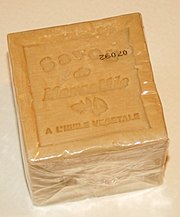Playing with Erlang (3): concurrency
In this post I'll show how to write a multithreaded erlang program where each child process will calculate if a given number is a Prime Number (not rocket science, a brute force algorithm will be used).
First this erlang module is called 'prime':
The method named 'test' with no argument is public
The method named 'start' creates a new thread for the function 'loop'. It returns the ID of this new thread.
The 'loop' method waits for a message in a child process. When it receives a message matching the pattern
'{ _From, {prime,Number},Start }' it invokes the recursive function is_prime and prints the result:receive
{ _From, {prime,Number},Start }->
io:format("result=~p\n Process-ID=~p\n Duration=~p ~n",[
is_prime(2,Number),
self(),
timer:now_diff(now(),Start)/1.0e6
])
;
{_From,_Other} ->
io:format("Booomm~n",[])
end.
The function 'is_prime' is a simple-and-stupid recursive method testing if a number is a prime where we search if the numbers 'Div' lower than 'N' have a modulus of 'Number/Div=0':
if
Div =:= Number -> {result,{number,Number},{prime,true}};
Number rem Div =:= 0 -> {result,{number,Number},{prime,false}};
true-> is_prime(Div+1,Number)
end.
The method named 'rpc' sends the ID of the current process, the prime number and the current system time to the child process:
Pid ! { self(), Request , now()}
.
The 'test' method creates a list 'NUMS' of numbers. For each number N in this list the function prime:start is called and it returns a new thread-ID. This Thread-ID is sent with 'N' to the function rpc.
NUMS=[111, 197951153,197951154,102950143,65537,3,7,8,12],
lists:foreach( fun(N)-> Pid= start(), rpc(Pid,{prime,N}) end, NUMS )
.
All in one, here is the full code:
-export([test/0]).
start()-> spawn(fun loop/0).
rpc(Pid,Request)->
Pid ! { self(), Request , now()}
.
loop()->
receive
{ _From, {prime,Number},Start }->
io:format("result=~p\n Process-ID=~p\n Duration=~p ~n",[
is_prime(2,Number),
self(),
timer:now_diff(now(),Start)/1.0e6
])
;
{_From,_Other} ->
io:format("Booomm~n",[])
end.
is_prime(Div,Number)->
if
Div =:= Number -> {result,{number,Number},{prime,true}};
Number rem Div =:= 0 -> {result,{number,Number},{prime,false}};
true-> is_prime(Div+1,Number)
end.
test()->
NUMS=[111, 197951153,197951154,102950143,65537,3,7,8,12],
lists:foreach( fun(N)-> Pid= start(), rpc(Pid,{prime,N}) end, NUMS )
.
Compiling:
Running:
Result (as you can see, the biggest prime appears at the end of the list because it took more time for the calculation):
Process-ID=<0.34.0>
Duration=0.006522
result={result,{number,111},{prime,false}}
Process-ID=<0.30.0>
Duration=7.6e-5
result={result,{number,197951154},{prime,false}}
Process-ID=<0.32.0>
Duration=4.57e-4
result={result,{number,3},{prime,true}}
Process-ID=<0.35.0>
Duration=7.25e-4
result={result,{number,7},{prime,true}}
Process-ID=<0.36.0>
Duration=7.23e-4
result={result,{number,8},{prime,false}}
Process-ID=<0.37.0>
Duration=7.22e-4
result={result,{number,12},{prime,false}}
Process-ID=<0.38.0>
Duration=7.2e-4
result={result,{number,102950143},{prime,true}}
Process-ID=<0.33.0>
Duration=8.856508
result={result,{number,197951153},{prime,true}}
Process-ID=<0.31.0>
Duration=49.51542
That's it.
Pierre.

